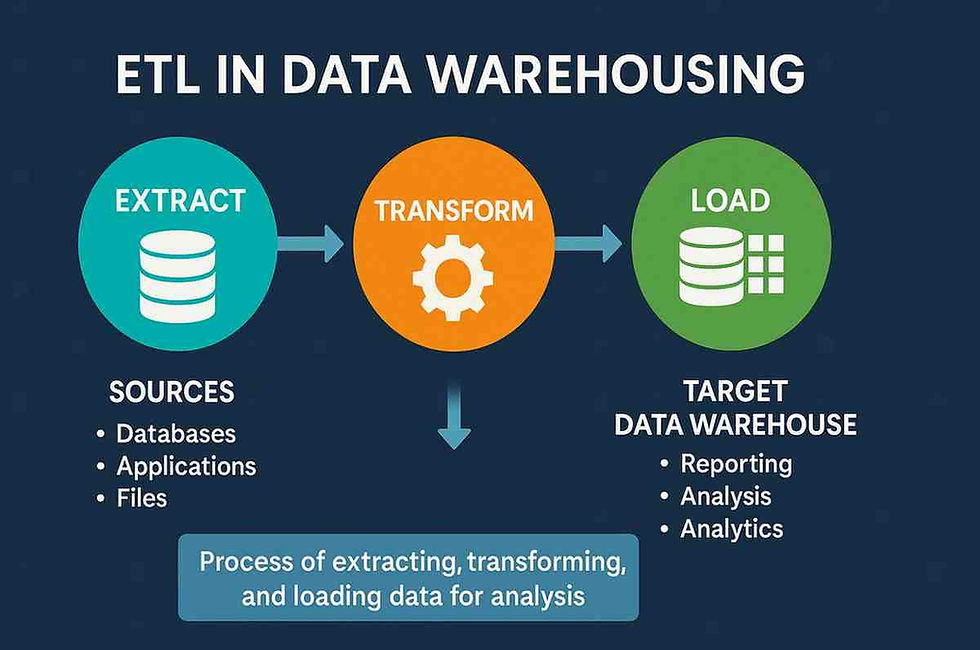Guide to Monkey Testing: Exploring Random Software Testing
- Gunashree RS
- Sep 25, 2024
- 7 min read
In software development, testing is a crucial part of the release cycle. Every product must go through rigorous testing to ensure its functionality, performance, and reliability. Among the many testing techniques used to identify bugs, monkey testing stands out for its unique approach. This method involves inputting random data into an application to see how it responds—whether it breaks, crashes, or performs as expected.
Unlike other more structured and planned forms of testing, monkey testing is free-form and unpredictable, making it useful in discovering edge cases and bugs that may otherwise go undetected. In this detailed guide, we will explore everything about monkey testing: what it is, its different types, tools, benefits, drawbacks, and how to integrate it effectively into your software testing process.
What is Monkey Testing?
Monkey testing is a form of random testing where testers input random, often invalid, or unexpected data into a software application to observe how it reacts. The idea behind monkey testing is to simulate unpredictable user behavior, trying to "break" the system or expose defects that wouldn’t be found through structured testing approaches.
The term "monkey testing" comes from the metaphor that if a monkey were to randomly press buttons on a keyboard, the application should be able to handle the input gracefully without crashing or producing critical errors. This type of testing is typically used for stress or reliability testing.

Key Characteristics of Monkey Testing:
No predefined test cases.
Tests are performed with random inputs.
Ideal for load and stress testing.
Can be automated or performed manually.
Minimal knowledge of the application is required for dumb monkey testing, while some variations require a deeper understanding.
Features of Monkey Testing
Monkey testing stands out because it focuses on unpredictability. Here are some of the core features that define monkey testing:
No Test Specifications: Unlike traditional testing, there are no specific test cases or scenarios to follow. Testers generate random inputs and see how the application responds.
Detection of Hidden Bugs: Monkey testing is useful for discovering bugs that might be missed by more structured tests. These could be due to unforeseen user actions or system stressors.
High-Level Dependability Testing: It is primarily used to detect issues related to the dependability and performance of the application, especially in high-traffic or stress scenarios.
Automated with Tools: Monkey testing can be automated using specialized tools, which can generate random inputs faster than manual testing.
Low-Effort Testing: Because there are no defined test cases, this technique requires less effort to plan and execute, making it suitable for quick exploratory testing in certain phases of development.
Types of Monkey Testing
Monkey testing can be broken down into three distinct categories, each with its approach and objectives:
1. Dumb Monkey Testing
In dumb monkey testing, the tester has no knowledge of the application’s internal workings or its workflow. The tester blindly inputs random values to the application in the hopes of breaking it or identifying critical bugs. This type of testing is useful for naive exploration but lacks precision or focused coverage.
Features of Dumb Monkey Testing:
The tester doesn't know how the application is supposed to behave.
Random inputs are given without any predefined logic.
Can uncover basic, critical issues like crashes or freezes.
Best for testing unexpected user behavior.
2. Smart Monkey Testing
In smart monkey testing, the tester has some knowledge of the application and its workflows. They generate random inputs but still have a basic understanding of the system's expected behaviors. This type of testing can be used to identify bugs in more critical paths or for stress testing specific features.
Features of Smart Monkey Testing:
The tester knows how the application works and inputs data accordingly.
Still involves random testing, but focuses on breaking specific components.
Useful for stress testing and ensuring system resilience under load.
3. Brilliant Monkey Testing
Brilliant monkey testing involves testers who have full knowledge of the application and its functionality. The tester has domain expertise and understands the system’s weak spots, allowing them to test from a user’s perspective with targeted random inputs.
Features of Brilliant Monkey Testing:
The tester has complete domain knowledge.
Tests are conducted with random inputs but in areas known to be risky.
This type of testing can uncover issues that may arise in future iterations of the application.
Monkey Testing Tools
Automating monkey testing can significantly reduce the time spent on random input generation and analysis. Several tools exist to help with the automation of monkey testing:
1. MonkeyRunner for Android
MonkeyRunner is a popular tool used for testing Android applications. It works by generating random inputs like button presses, gestures, and other UI interactions. MonkeyRunner allows testers to run programs in Python, control multiple devices, and capture screenshots.
Features:
Executes Android programs automatically.
Can be used for functional testing.
Useful for automating unit testing in Android applications.
2. UI/Application Exerciser Monkey
The UI/Application Exerciser Monkey is another tool for Android, which works by running in the ADB shell of the emulator. It generates random inputs like touches, swipes, and clicks. This tool helps in testing the robustness of an application by stressing it with multiple UI interactions in rapid succession.
Features:
Generates random touch, gesture, and navigation events.
Helps simulate user activity inside the Android emulator.
Useful for detecting crashes and performance bottlenecks.
3. BrowserStack for Mobile Testing
If you are looking for a solution to test applications on real devices, BrowserStack offers a robust testing infrastructure. Their App Live and App Automate products allow testers to run both manual and automated monkey tests on a wide range of real devices and OS versions.
Key Features:
Instant access to over 3000 real devices and browsers.
Test across various operating systems, including Android and iOS.
Automate stress testing using real devices for accurate results.
Advantages of Monkey Testing
Monkey testing has its own unique benefits, especially when it comes to quickly identifying unexpected issues or testing an application's dependability:
Uncovers Hidden Bugs: Since random inputs are given, bugs that might be missed by structured testing are often found.
Cost-Effective: The process doesn’t require creating extensive test cases, making it more cost-effective compared to other testing methods.
Useful for Stress Testing: It helps simulate heavy loads and stress conditions on an application, allowing developers to test how the system performs under pressure.
Minimal Knowledge Required: In dumb monkey testing, even testers without domain knowledge can execute the tests, making it accessible for exploratory testing.
Quick Testing Cycle: Because there are no predefined test cases, the process is faster, which is beneficial for projects with tight timelines.
Disadvantages of Monkey Testing
While monkey testing has its strengths, it also comes with notable limitations:
Randomness Limits Accuracy: The random nature of monkey testing means that the test coverage is unpredictable and the accuracy of the results can be compromised.
Hard to Reproduce Bugs: Since the inputs are random, reproducing bugs for fixing them can be difficult, making debugging a challenge.
Not Ideal for Every Project: Monkey testing isn’t suitable for applications where precise, structured testing is required. It may also not be ideal for projects with limited time.
Limited Control Over Test Scenarios: Testers can’t control or predict which areas of the application will be tested, which may result in important components being left untested.
Doesn’t Guarantee Full Coverage: Since there are no predefined test cases, monkey testing does not guarantee that all functionalities will be tested, leading to possible oversights.
When to Use Monkey Testing
While monkey testing may not be suitable for all phases of the software development lifecycle, it can be particularly useful in the following scenarios:
Post-Beta Release Testing: When most major bugs have already been found, monkey testing can help uncover edge cases or crashes that may have been missed.
Stress/Load Testing: Monkey testing is excellent for simulating heavy loads or unpredictable user behavior to test an application’s resilience.
Exploratory Testing: When there is limited time to create detailed test cases, monkey testing can quickly provide insight into potential issues.
FAQs About Monkey Testing
1. What is the main goal of monkey testing?
The primary goal of monkey testing is to test an application by providing random inputs and actions, trying to break the system or discover hidden bugs. It is especially useful for stress and dependability testing.
2. Is monkey testing automated or manual?
Monkey testing can be both manual and automated. Tools like MonkeyRunner and UI/Application Exerciser Monkey allow testers to automate the process of generating random inputs, making the process faster and more efficient.
3. When should monkey testing be used in the software development lifecycle?
Monkey testing is often used during the later stages of development when most critical bugs have already been resolved. It is ideal for load testing or discovering rare edge cases.
4. What is the difference between dumb and smart monkey testing?
Dumb monkey testing involves testers who have no knowledge of the application, while smart monkey testing is performed by testers who have a basic understanding of the system and can focus their random testing on specific areas.
5. What are the main limitations of monkey testing?
Monkey testing’s randomness makes it difficult to guarantee full coverage of the application. Additionally, bugs found through monkey testing can be challenging to reproduce, which can slow down the debugging process.
6. Can monkey testing be combined with other testing methods?
Yes, monkey testing is often used in combination with other testing methods like unit testing, integration testing, and regression testing. It serves as an exploratory tool to complement structured testing approaches.
Conclusion
Monkey testing is a valuable testing method that serves as a complement to more structured approaches. Its randomness allows for the discovery of bugs and edge cases that might be overlooked during traditional testing processes. While it is not suitable for every project or stage of development, monkey testing can be an effective tool when used appropriately, especially for stress and load-testing scenarios.
By utilizing monkey testing tools and techniques, development teams can ensure that their applications are robust, resilient, and capable of handling unpredictable user behaviors, making it an important part of the overall testing toolkit.
Key Takeaways
Monkey testing is a type of random testing aimed at uncovering hidden bugs through unpredictable inputs.
It can be dumb, smart, or brilliant, depending on the tester’s knowledge of the application.
Popular tools like MonkeyRunner and UI Exerciser Monkey automate monkey testing for Android applications.
It’s especially useful for stress, load, and exploratory testing, but its randomness can limit test coverage and bug reproduction.




Comments